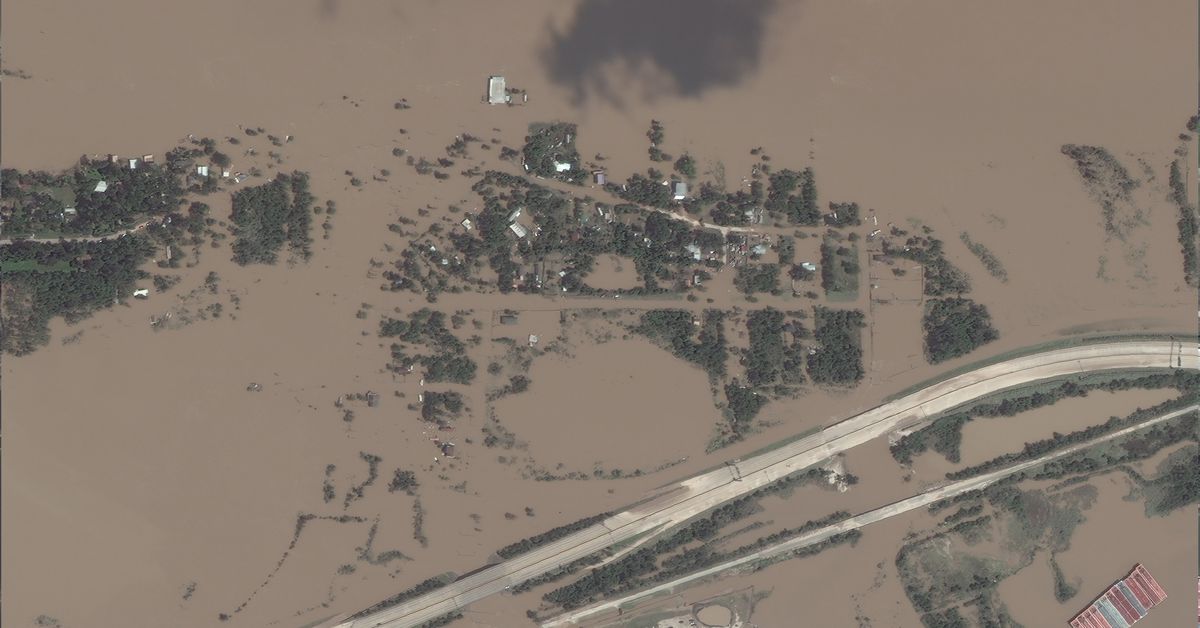Floods and firestorms can spread toxins from Superfund sites

Wildfires and flooding exacerbated by climate change threaten to unleash contaminants from some of the most polluted sites across the United States, the Government Accountability Office (GAO) warned in a report publicly released Monday. According to the watchdog agency, about 60 percent of these sites are vulnerable to extreme weather events made worse by a changing climate.
Superfund sites are locations so contaminated that they’ve been placed on a National Priorities List by the Environmental Protection Agency. Of 1,571 nonfederal Superfund sites spread across the country that the GAO examined, 945 are vulnerable to some of the most extreme effects of climate change. The GAO plotted these 945 climate-vulnerable locations on an interactive map color-coded to show whether each site is threatened by wildfires, storm surge, sea-level rise, or coastal and river flooding.
Asked about the new report, a spokesperson for the GAO tells The Verge that the EPA needs to safeguard the sites, and make sure that the contaminants within their boundaries remain contained. Of particular concern to the GAO are Superfund sites located near big urban centers.
Take the San Jacinto River Waste Pits near Houston, for example. After Hurricane Harvey barreled through the area in 2017, floodwaters eroded an “armored cap” sealing off dioxins and other toxic substances linked to cancer, and liver and nerve damage. After the storm, officials found that dioxin levels in the river sediment nearby was more than 2,000 times higher than what the EPA normally allows. That toxic site is still vulnerable to future storm surges and rising sea levels, according to the GAO report.
The Carr fire, which raged through parts of Northern California near Redding in 2018 tore through the Iron Mountain Mine Superfund site. Iron Mountain is laden with heavy metals that pose a threat to local wildlife like trout and salmon. The fire nearly destroyed the water treatment system at the site. Luckily, firefighters stopped the blaze before it reached the ore body in the mine that “could have led to an explosion and substantial health and environmental hazards” according to the GAO report.
Another concern that the GAO report outlines is the absence of climate change in the EPA’s current strategic plan, an about-face under the Trump administration compared to the agency under Barack Obama. “Essentially, putting something in a strategic plan means that the senior official at the agency thinks it’s important,” the spokesperson at the GAO tells The Verge. “If it’s not important, will efforts on the ground fade out because people aren’t getting that attention from above?”
The GAO made four recommendations to the EPA on how it can better manage the risks posed to Superfund sites by global warming. So far, the EPA has only agreed to following one of those recommendations: it will clarify the boundaries of toxic sites on its National Priorities List. The GAO report says that the agency lacks “quality information” on where all those boundaries are, which makes it more difficult for the public and officials to understand how far out the danger of contamination could spread.
“The EPA strongly believes the Superfund program’s existing processes and resources adequately ensure that risks and any effects of severe weather events, that may increase in intensity, duration, or frequency, are woven into risk response decisions at nonfederal [National Priorities List] sites,” EPA Assistant Administrator Peter Wright responded to The Verge in an email.
https://www.theverge.com/2019/11/18/20970979/climate-change-epa-superfund-sites-gao-toxic-pollution